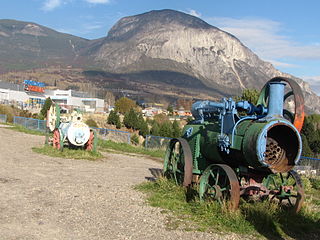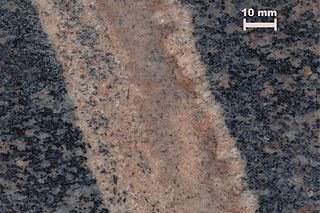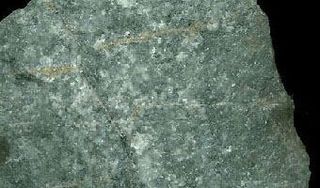 W
WAdakites are volcanic rocks of intermediate to felsic composition that have geochemical characteristics of magma originally thought to have formed by partial melting of altered basalt that is subducted below volcanic arcs. Most magmas derived in subduction zones come from the mantle above the subducting plate when hydrous fluids are released from minerals that break down in the metamorphosed basalt, rise into the mantle, and initiate partial melting. However, Defant and Drummond recognized that when young oceanic crust is subducted, adakites are typically produced in the arc. They postulated that when young oceanic crust is subducted it is "warmer" than crust that is typically subducted. The warmer crust enables melting of the metamorphosed subducted basalt rather than the mantle above. Experimental work by several researchers has verified the geochemical characteristics of "slab melts" and the contention that melts can form from young and therefore warmer crust in subduction zones.
 W
W"Apache tears" is the popular term for rounded pebbles of obsidian or "obsidianites" composed of black or dark-colored natural volcanic glass, usually of rhyolite composition and bearing conchoidal fracture. Also known by the lithologic term "marekanite", this variety of obsidian occurs as subrounded to subangular bodies up to about 2 inches in diameter, often bearing indented surfaces. Internally the pebbles sometimes contain fine bands or microlites and though in reflected light they appear black and opaque, they may be translucent in transmitted light. Apache tears fall between 5 and 5.5 in hardness on the Mohs scale.
 W
WAplite is an intrusive igneous rock in which the mineral composition is the same as granite, but in which the grains are much finer, under 1 mm across. Quartz and feldspar are the dominant minerals. The term 'aplite' or 'aplitic' is often used as a textural term to describe veins of quartz and feldspar with a fine to medium-grain "sugary" texture. Aplites are usually very fine-grained, white, grey or pinkish, and their constituents are visible only with the help of a magnifying lens. Dykes and veins of aplite are commonly observed traversing granitic bodies; they occur also, though less frequently, in syenites, diorites, quartz-diabases and gabbros.
 W
WArchean felsic volcanic rocks are felsic volcanic rocks that were formed in the Archean Eon. The term "felsic" means that the rocks have silica content of 62–78%. Given that the Earth formed at ~4.5 billion year ago, Archean felsic volcanic rocks provide clues on the Earth's first volcanic activities on the Earth's surface started 500 million years after the Earth's formation.
 W
WDacite is an volcanic rock formed by rapid solidification of lava that is high in silica and low in alkali metal oxides. It has a fine-grained (aphanitic) to porphyritic texture and is intermediate in composition between andesite and rhyolite. It is composed predominantly of plagioclase feldspar and quartz.
 W
WGranite is a coarse-grained igneous rock composed mostly of quartz, alkali feldspar, and plagioclase. It forms from magma with a high content of silica and alkali metal oxides that slowly solidifies underground. It is common in the Earth's continental crust, where it is found in various kinds of igneous intrusions. These range in size from dikes only a few inches across to batholiths exposed over hundreds of square kilometers.
 W
WGranodiorite is a phaneritic-textured intrusive igneous rock similar to granite, but containing more plagioclase feldspar than orthoclase feldspar. According to the QAPF diagram, granodiorite has a greater than 20% quartz by volume, and between 65% to 90% of the feldspar is plagioclase. A greater amount of plagioclase would designate the rock as tonalite.
 W
WObsidian is a naturally occurring volcanic glass formed as an extrusive igneous rock.
 W
WPerlite is an amorphous volcanic glass that has a relatively high water content, typically formed by the hydration of obsidian. It occurs naturally and has the unusual property of greatly expanding when heated sufficiently. It is an industrial mineral and a commercial product useful for its low density after processing.
 W
WRhyolite is the most silica-rich of volcanic rocks. It is generally glassy or fine-grained (aphanitic) in texture, but may be porphyritic, containing larger mineral crystals (phenocrysts) in an otherwise fine-grained rock. The mineral assemblage is predominantly quartz, sanidine and plagioclase. It is the extrusive equivalent to granite.
 W
WTonalite is an igneous, plutonic (intrusive) rock, of felsic composition, with phaneritic texture. Feldspar is present as plagioclase with 10% or less alkali feldspar. Quartz is present as more than 20% of the rock. Amphiboles and pyroxenes are common accessory minerals.